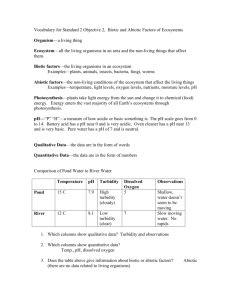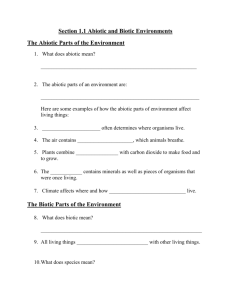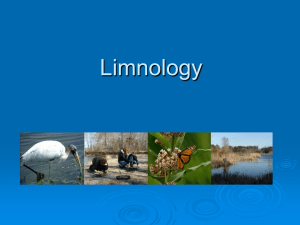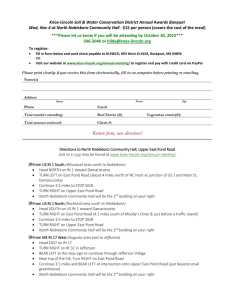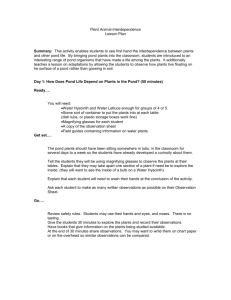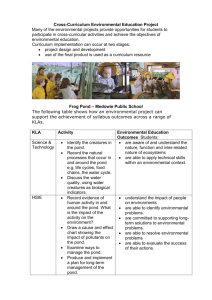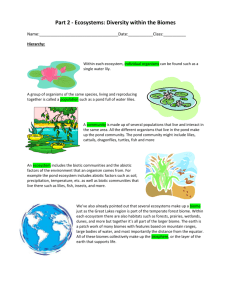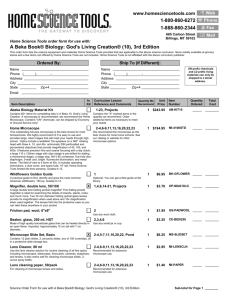POND ECOLOGY
advertisement
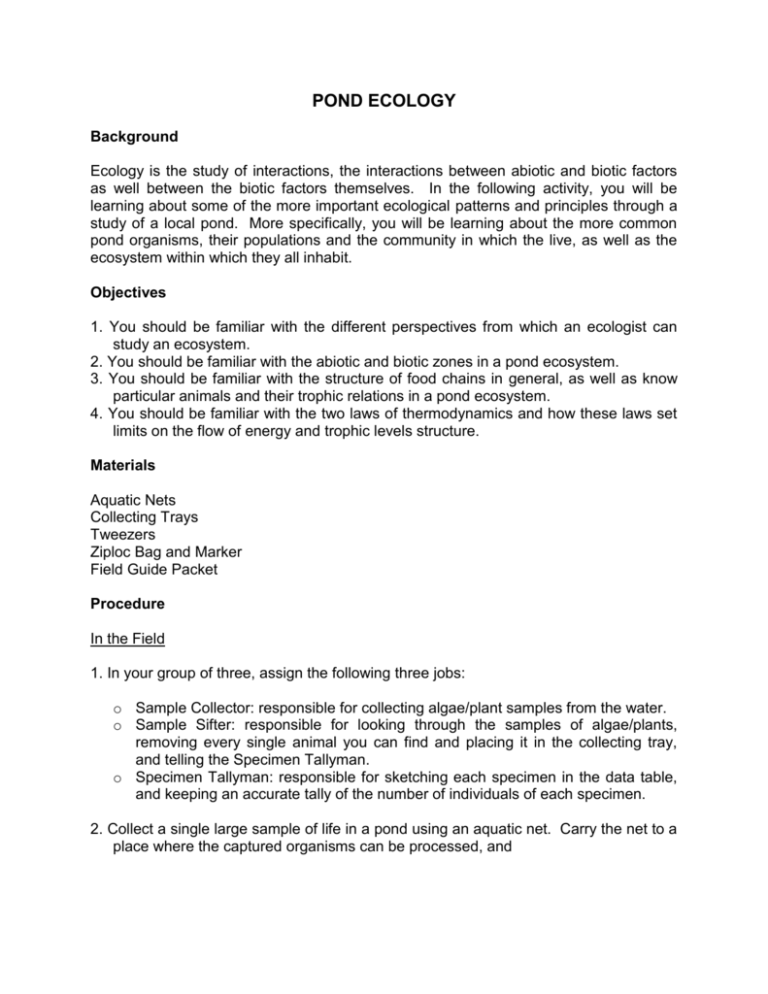
POND ECOLOGY Background Ecology is the study of interactions, the interactions between abiotic and biotic factors as well between the biotic factors themselves. In the following activity, you will be learning about some of the more important ecological patterns and principles through a study of a local pond. More specifically, you will be learning about the more common pond organisms, their populations and the community in which the live, as well as the ecosystem within which they all inhabit. Objectives 1. You should be familiar with the different perspectives from which an ecologist can study an ecosystem. 2. You should be familiar with the abiotic and biotic zones in a pond ecosystem. 3. You should be familiar with the structure of food chains in general, as well as know particular animals and their trophic relations in a pond ecosystem. 4. You should be familiar with the two laws of thermodynamics and how these laws set limits on the flow of energy and trophic levels structure. Materials Aquatic Nets Collecting Trays Tweezers Ziploc Bag and Marker Field Guide Packet Procedure In the Field 1. In your group of three, assign the following three jobs: o Sample Collector: responsible for collecting algae/plant samples from the water. o Sample Sifter: responsible for looking through the samples of algae/plants, removing every single animal you can find and placing it in the collecting tray, and telling the Specimen Tallyman. o Specimen Tallyman: responsible for sketching each specimen in the data table, and keeping an accurate tally of the number of individuals of each specimen. 2. Collect a single large sample of life in a pond using an aquatic net. Carry the net to a place where the captured organisms can be processed, and 3. Transfer every single observable living animal into a container. You will have to look through all the algae very carefully. As you do so, sketch each specimen for later use in identification in the space provided. Furthermore, as specimens are transferred keep an accurate tally for each different species observed. 4. When, told to return to class, place one representative specimen of each species in your labeled Ziploc bag for later use in identification, and return the remaining specimens to the pond, making sure that the container is cleaned of snails, etc… Homework and Classwork 1. Answer “Background” questions that follow about aquatic and pond ecosystems. 2. Use a field guide or internet to identify the specimens and determine what they eat so that they you can figure out the trophic level in which each participates. Complete the “Food Chain” question. 3. Complete the “Tally Analysis” (probably for a second nights homework). POND ECOLOGY Name: _____________________________ Questions Pond Data 1. Sketch and identify the organisms found in our pond samples, and then determine what they eat. Record the information in the following table. Number Name Sketch 1 2 3 4 5 6 & Trophic Habits Tally 7 8 9 10 11 12 13 14 15 Background Read Chapter 34.4 to answer the following questions. 2. What abiotic factor is used to distinguish between the two general categories of water found on Earth? 3. What abiotic factor is used to distinguish between the two general categories of freshwater? 4. Sketch a picture of a pond, and identify the names and note the abiotic characteristics that distinguish the three zones. 5. Although your book does not acknowledge the fact, the photic zone is divided into the “littoral zone”, along the edge of the pond, and the “limnetic zone”, inside where there is open water. What is different about the plant life found in these subdivisions of the photic zone? Why does this make sense? Food Chain 6. Use your knowledge of the tropic levels of each organism and what they eat to create a diagram of a food chain in a fashion similar to the one on the desert ecosystem pictured on page 790. Tally Analysis 7. Next, read the section on ecological pyramids on pages 793 and 794 of your textbook and then create a pyramid of numbers for each of the trophic levels for which you have data. Does your pyramid look similar to the one in the book? Explain. 8. Finally, explain why the amount of energy, biomass, and numbers decreases as you move up the food chain, with reference to both laws of thermodynamics (incorporating the second law is more important than incorporating the first law).

